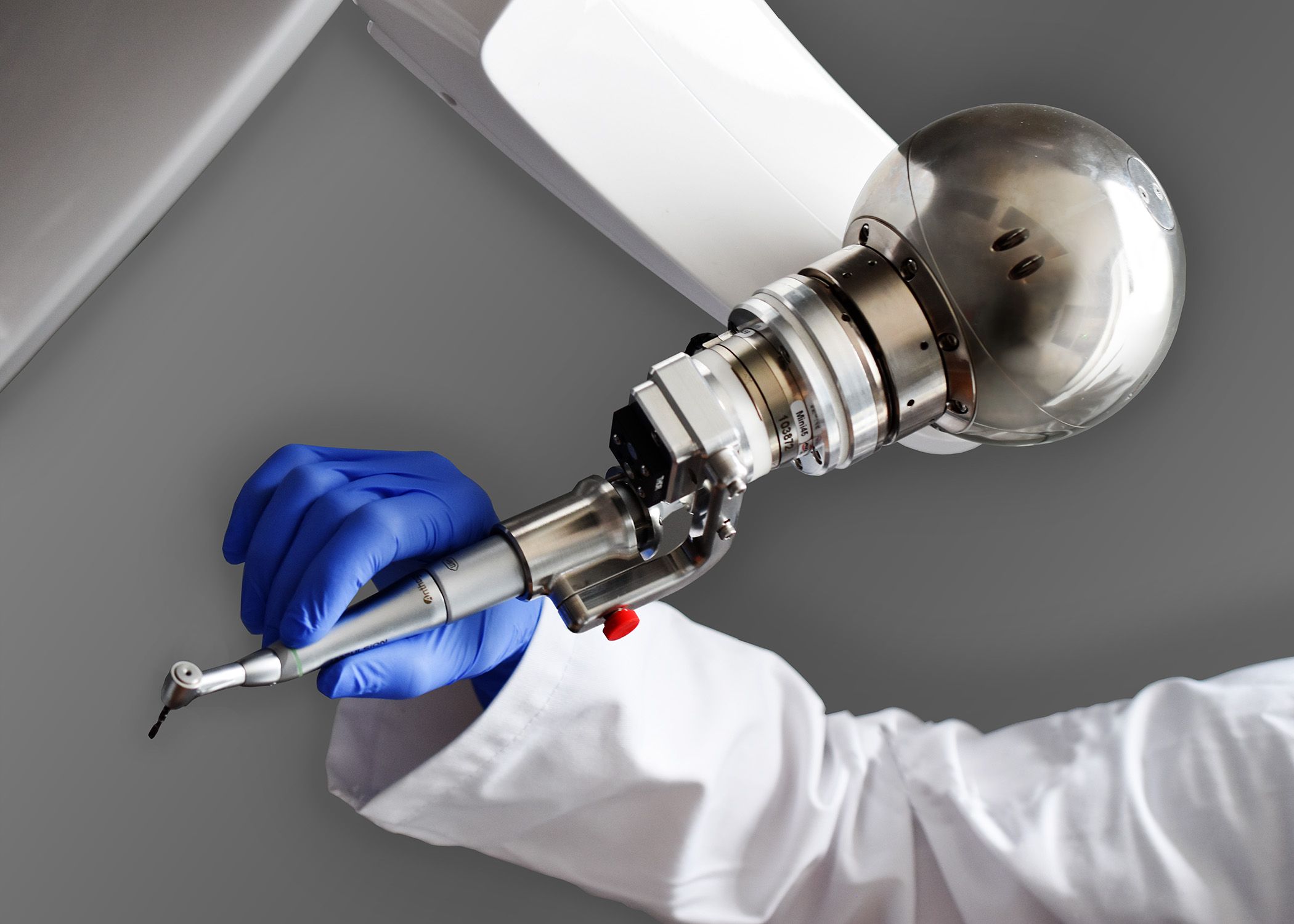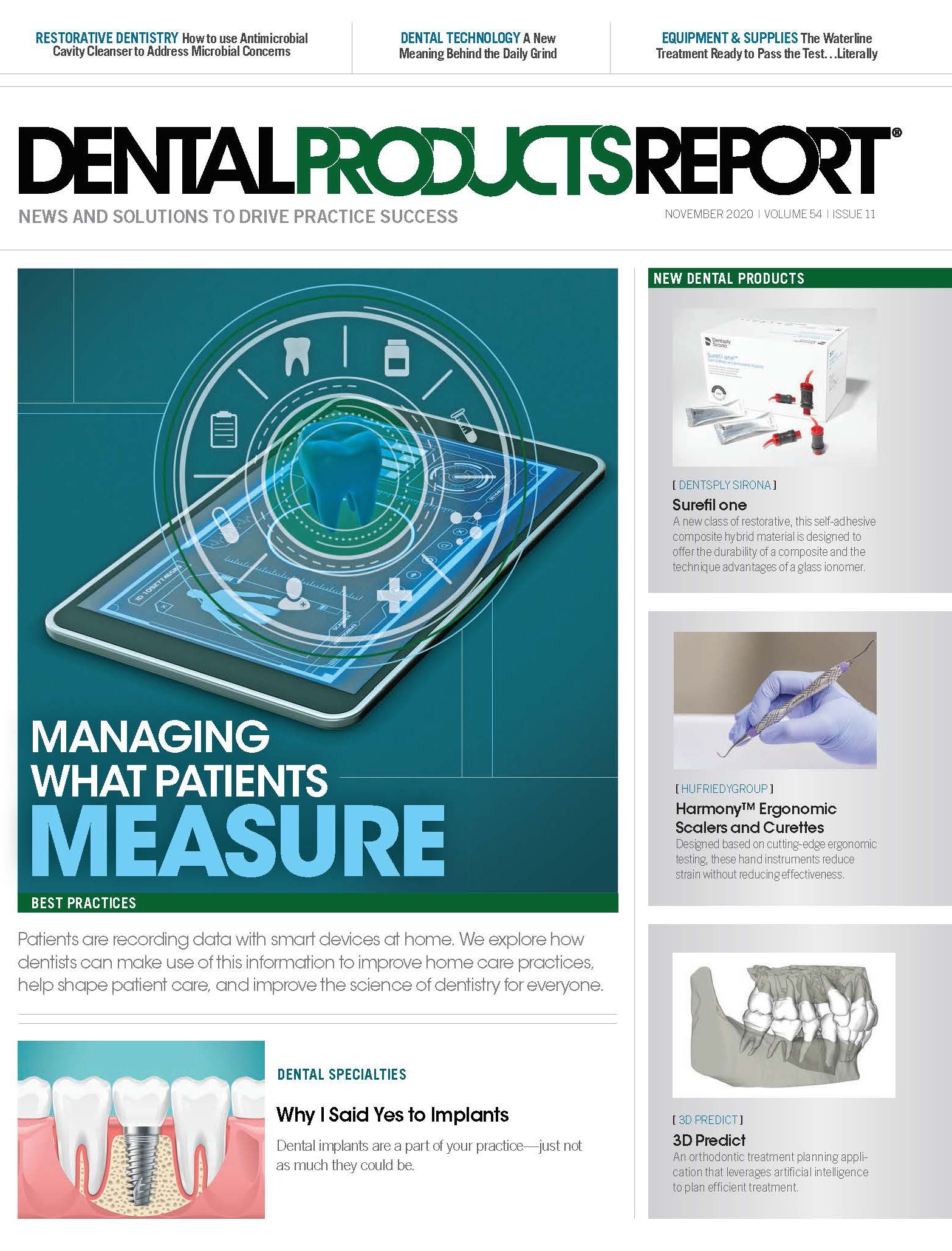Accuracy matters. Dental implants are the preferred treatment modality for replacing missing teeth. Fifteen thousand dental specialists and 150,000 general practice dentists place nearly 4 million implants annually in the United States. It has been shown that the accuracy of implant placement directly influences prosthetic results.1-3
Understanding this, several technological advances have increased the accuracy of implant placement, starting with the use of 3D cone-beam computed tomography (CBCT) scanning to facilitate three-dimensional planning.4 As a result, static guides and dynamic navigation have both improved the accuracy of implant placement compared to freehand techniques.5-9
The use of static guides is sometimes limited by the patient’s range of mandibular motion. In addition, each step of preparing a static guide, such as impression or scanning, pouring or milling model, 3D CBCT scan, planning, materials used to fabricate guide, and placing guide channel has potential errors. With robotics, there is a reduction of potential errors.
More recently, haptic robotic guidance for both bone preparation and implant placement provides the accuracy of static guides, along with the added advantage of intraoperative plan adjustment, full visualization, proper irrigation, and the use of standard drill equipment.10 With robotics, full 3D planning is performed that allows virtual enhanced visualization of critical anatomical structures. The plan is implemented using haptic robotics, which provides physical, visual, and audio feedback to guide the surgeon during the digital plan’s execution to the desired location, angulation, and depth.
It is important to note that with robotic implant preparation and placement, the surgeon is physically constrained to drilling at the planned location, orientation, and depth while still given the ability to adjust this plan intraoperatively if needed.
Yomi® Dental Robotic System
- The first and only FDA-cleared robot-assisted dental surgery system
- A computerized navigational and robotics system intended to provide assistance in both the planning and the surgical phases of dental implantation surgery. Provides software to preoperatively plan dental implantation procedures and provides navigational guidance of the surgical instruments
- Neocis has received 510(k) clearance from the FDA for a new Yomi edentulous indication. This allows for a new splint attachment that broadens Yomi’s application to include full arch implant cases and partially edentulous cases
Neocis
A Patient and the Plan
A 23-year-old man presented with symptomatic tooth No. 9, which had previous endodontic treatment following a traumatic injury. An endodontic evaluation revealed a poor long-term prognosis. The plan was to extract the tooth and place an immediate implant.
The 3-dimensional planning revealed that the incisive canal and the root of tooth No. 10 were in close proximity to the desired implant position. In this particular case, accuracy was required. Thus, it was an ideal case for the Yomi® Dental Robotic System by Neocis®, as Yomi assures that an appropriately safe distance is kept from the nasopalatine nerve and neighboring roots.
Clinical Technique
On the day of the procedure, local anesthesia was administered and the tooth-supported treatment guide was fitted. Once the treatment guide was placed, a 3D CBCT scan was taken with a fiducial array attached to the treatment guide. The information was exported to the Yomi software and merged with the digital preplan. Tooth No. 9 was extracted atraumatically, without osseous reduction, maintaining the natural soft tissue architecture.
The robotic tracker arm was attached to the treatment guide. This process registered the robot to the patient’s anatomy providing the robot with the knowledge of the exact position and orientation of the instruments in relation to the 3D space of the patient. Both the drilling and the implant placement were guided robotically.
While the surgeon controls the device, the robot guides and then locks the instrument along the preplanned angle and position, and allows drilling no further than the preplanned depth. A series of Densah® Burs from Versah® were used per protocol to expand the osseous structure and increase osseous density. An Astra Tech OsseoSpeed EV implant (3.6 x 15 mm) from Dentsply Sirona was placed. The patient elected to proceed with a Dentsply Sirona Essix splint as a provisional restoration, rather than a nonfunctional fixed provisional crown. The treatment guide was removed, and a healing abutment was placed.
Conclusion
Accuracy and precision are always important when placing dental implants to ensure maximum longevity and optimal restoration. This is particularly true in cases with limited access, limited visibility, or limited distance between the planned implant and important anatomic structures, such as nerves and neighboring roots. Robotic guidance using the Yomi Dental Robotic System provides accuracy and precision with every implantation.
The case presented here demonstrates the ease that robotic guidance allows for safe and accurate placement of an immediate implant in an esthetically important location.
References
1. Kosinski T. Proper preparation for prosthetically driven implants: CBCT diagnosing and surgical protocol. Dent Today. 2017;36(6):56-59.
2. Dano D, Stiteler M, Giordano R. Prosthetically driven computer-guided implant placement and restoration using CEREC: a case report. Compend Contin Educ Dent. 2018;39(5):311-317.
3. Vieira DM, Sotto-Maior BS, Barros CAVDS, Reis ES, Francischone CE. Clinical accuracy of flapless computer-guided surgery for implant placement in edentulous arches. Int J Oral Maxillofac Implants. 2013;28(5):1347-1351. doi:10.11607/jomo.3156
4. G. Mandelaris and B. DeGroot, “The evolution of imaging and associated applications for implant surgery,” in Clinical Evolution in Implantology (for Optimum Patient Benefits), Chicago, Quintessence, 2019.
4. Mandelaris GA, DeGroot BS. The evolution of imaging and associated applications for implant surgery. In: Nevins M, Wang HL. Clinical Evolution in Implantology (for Optimum Patient Benefits). Chicago: Quintessence 2019.
5. Tahmaseb A, Wismeijer Coucke W, Derksen W. Computer technology applications in surgical implant dentistry: a systematic review. Int J Oral Maxillofac Implants. 2014;Suppl 29:25-42. doi:10.11607/jomo.2014suppl.g1.2.
6. D’haese J, Ackhurst J, Wismeijer D, H. De Bruyn H, Tahmaseb A. Current state of the art of computer-guided implant surgery. Periodontol 2000. 2017;73(1):121-133. doi:10.1111/prd.12175
7. Vercruyssen M, Fortin T, Widmann G, Jacobs R, Quirynen M. Different techniques of static/dynamic guided implant surgery: modalities and indications. Periodontol 2000. 2014;66)1)214-227.doi:10.1111/prd.12056
8. Younes F, Cosyn J, De Bruyckere T, Cleymaet R , Bouchaert E, Eghbali A. A randomized controlled study on the accuracy of free-handed, pilot-drill guided and fully guided implant surgery in partially edentulous patients. J Clin Periodontol. 2018;45(6):721-732. doi:10.1111/jcpe.12897
9. Block MS, Emery RW. Static or dynamic navigation for implant placement-choosing the method of guidance. J Oral Maxillofac Surg. 2016;74(2);269-277. doi:10.1016/j.joms.2015.09.022
10. Rawal S, Tillery Jr DE, Brewer P. Robotic-assisted prosthetically driven planning and immediate placement of a dental implant,” Compend Contin Educ Dent. 2020;41(1):26-30.

